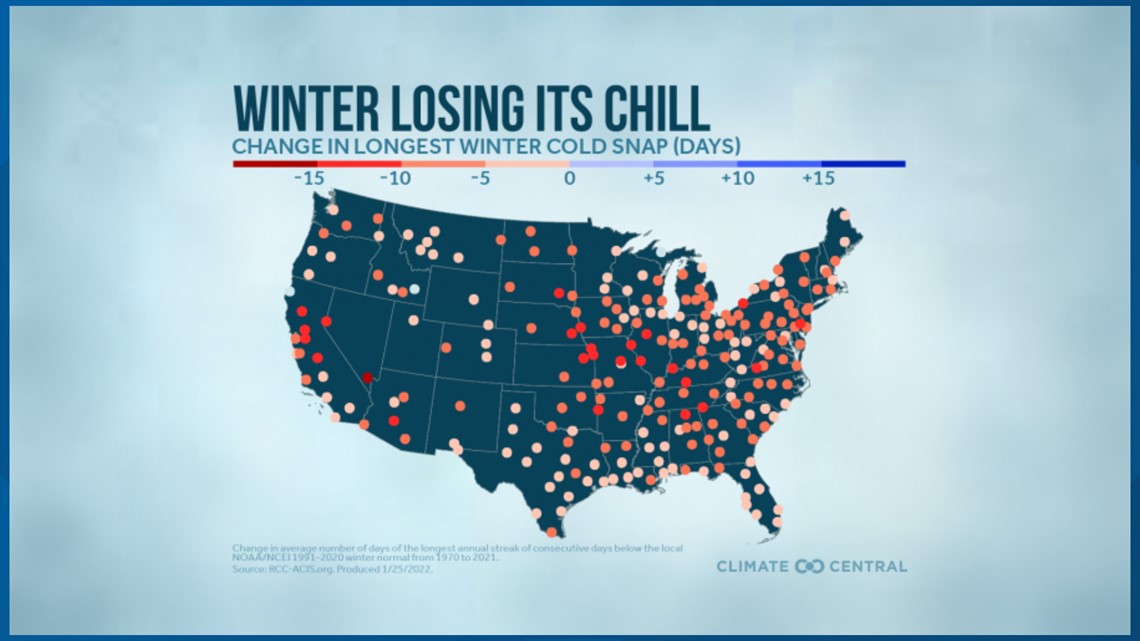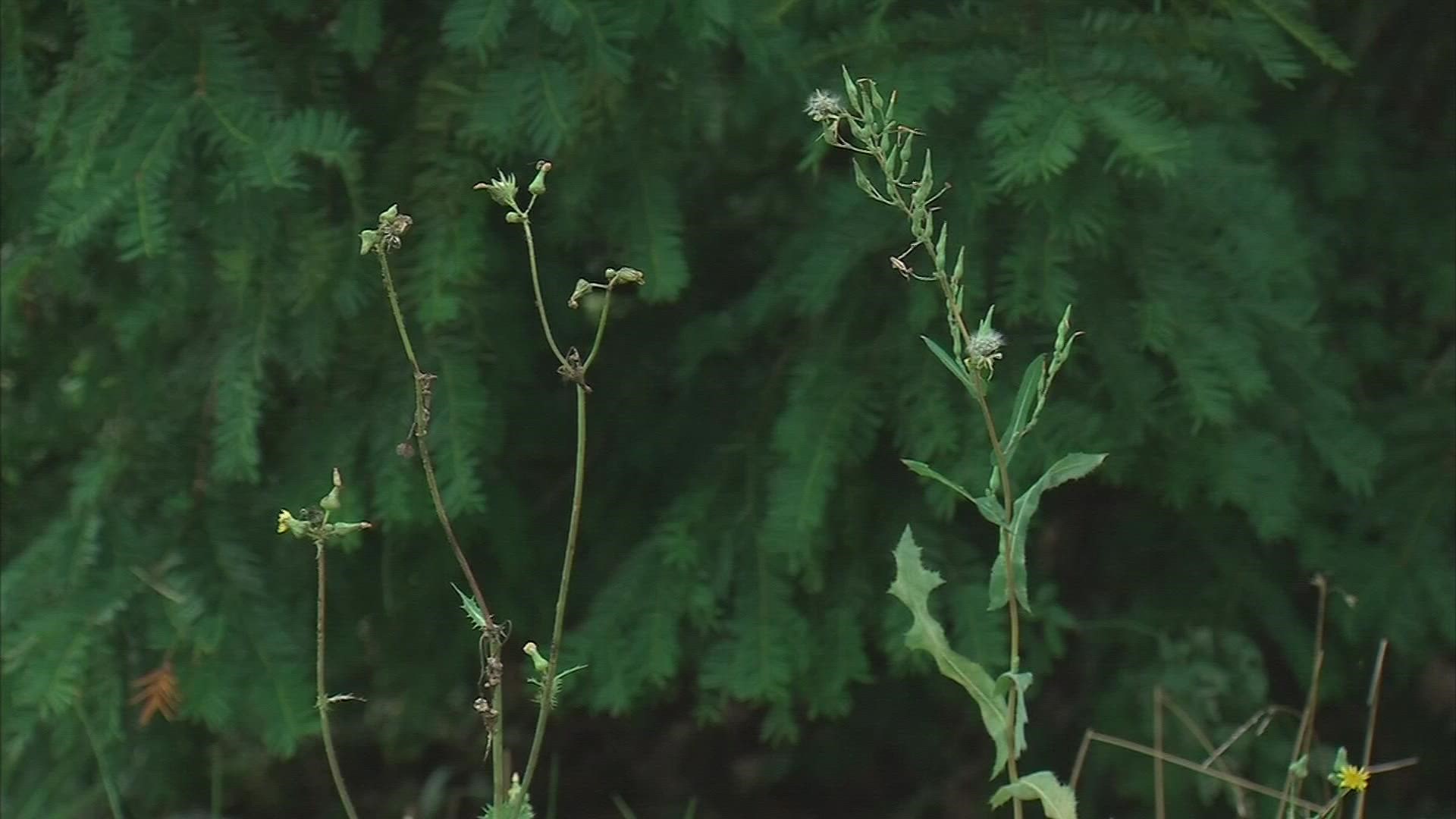COLUMBUS, Ohio — Typically, we see the heart of “spring allergy season” in March or April, but this year that timeline has moved up some.
Allergist Dr. Andrew Dang, with Premier Allergy & Asthma, started seeing patients in February for pollen that we usually see in the spring. With our winters trending warmer, trees and grass will start to produce pollen sooner.


Over the past 50 years, 97% of the 244 weather stations have experienced shrinking winter cold snaps according to data from Climate Central. Cold snaps shrunk by 6 days on average across these weather stations.
“Spring and summer could overlap allowing for tree and grass pollen in one season. That could be a problem because most people have multiple allergies,” Dr. Andrew Dang said.
Beyond over the counter medication, you can also follow a few of these tips to help with allergies:
- Spend more time indoors during high pollen days
- Frequently change out your air filter
- Brush off your pet before they return inside
- Try a saline nasal rinse
- Keep windows closed and use the AC
- Use a mask when you go outside

